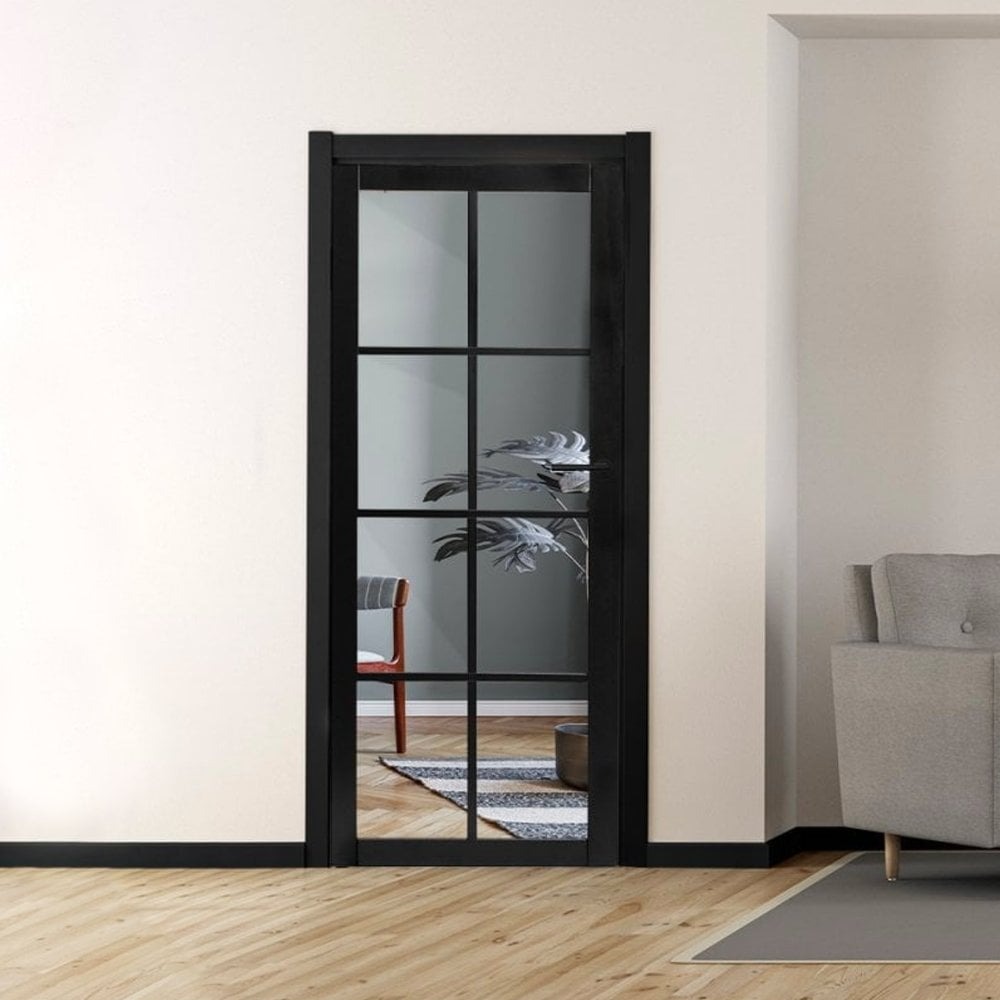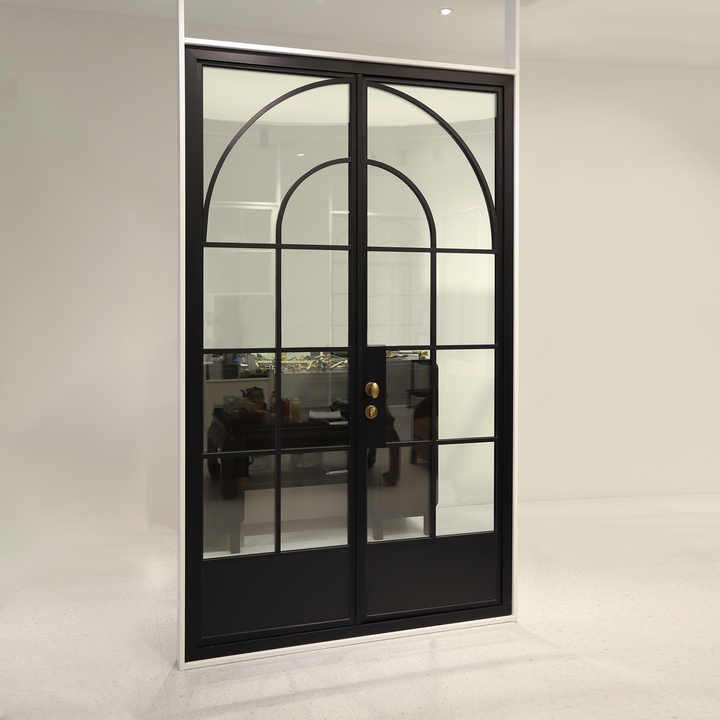Introduction to Doorway Height Standards
When it comes to construction and design, the standard doorway height is a critical measurement that ensures uniformity and accessibility in buildings. The typical height for interior doors in residential buildings is around 80 inches, while commercial spaces often require taller doors to accommodate diverse needs. These standards are not arbitrary; they are based on decades of architectural practice and regulatory guidelines that aim to balance aesthetics, safety, and functionality. For builders, architects, and designers, understanding and adhering to these standards is crucial for creating spaces that are both welcoming and compliant with local and national building codes. In our discussion, we will explore the various aspects that dictate what the standard doorway height should be, why it matters, and how compliance can be achieved in construction projects.
Measuring Doorway Heights: Methods and Tools
Ensuring precise measurements of doorway heights is essential in construction and design. To measure the standard doorway height, professionals use specific methods and tools. Here are the key steps and equipment needed to guarantee accurate measurements:
- Tape Measure: A retractable tape measure is the most common tool for measuring doorway heights. It offers flexibility and precision.
- Laser Distance Measurer: For a more technologically advanced approach, a laser distance measurer provides quick and precise measurements.
- Level: To ensure that the doorway height is measured from a true horizontal line, a level is crucial.
- Straight Edge: A straight edge helps to extend the measuring reach, particularly in areas where a tape measure may not be long enough alone.
- Marking Tools: Pencils or markers are useful for indicating the measured points on the door frame.
It’s important to measure from the finished floor to the top of the door frame. Always check measurements at different points to account for any discrepancies. Record these figures meticulously as they form the basis for ensuring compliance with standard doorway height regulations.
When using these tools, start by securing the zero point of the tape measure or laser at the floor level, avoiding any floor coverings. Extend the tape measure or aim the laser to the top of the door frame, keeping the tool straight to avoid any angle errors. For precision, it’s recommended to take measurements in at least two different spots along the doorway. This method helps cater to any potential unevenness in the floor or the frame itself.
By following these steps, construction professionals can achieve accurate and consistent doorway height measurements, which are crucial for meeting construction standards and codes.
International Building Code: The Basis for Height Standards

The International Building Code (IBC) sets the foundation for standard doorway height. Builders and architects worldwide use IBC guidelines for designing safe structures. The IBC clearly defines the minimum doorway height requirement. This is usually not less than 80 inches for residential buildings. For commercial buildings, the IBC might suggest taller doorways. These standards help in creating universal design patterns.
IBC requirements ensure that doorways meet fire safety and evacuation protocols. In emergencies, a standardized doorway height aids in swift exit. The code also accommodates accessibility for people with disabilities. It ensures clear passage for emergency services. Builders follow IBC to avoid legal issues and to ensure public safety.
Architects and construction teams must know the IBC rules thoroughly. Not following the IBC can lead to failed inspections and costly rebuilds. Compliance ensures that buildings meet safety, accessibility, and function standards. In sum, adherence to the IBC sets the bar for doorway heights. It fosters design consistency across the construction industry.
ADA Compliance: Requirements for Public Buildings
Public buildings must meet standards set by the Americans with Disabilities Act (ADA). The ADA sets clear guidelines for doorway heights to ensure that people with disabilities can access public spaces without barriers. The standard ADA doorway height must be at least 80 inches, similar to the IBC recommendations. This requirement helps those who use wheelchairs or other mobility devices. To comply with ADA standards, public buildings must consider various factors in doorway design.
Key ADA requirements include:
- Clear Width: Doorways must have a minimum clear opening of 32 inches when the door is open at 90 degrees. This allows wheelchair users to pass through without difficulty.
- Threshold Height: The threshold of a doorway should not exceed 0.5 inches in height for interior doors and 0.75 inches for exterior doors to prevent tripping or wheel obstruction.
- Handle Height: Door handles must not be higher than 48 inches from the floor and they must be usable with one hand, without the need for tight grasping, pinching, or twisting of the wrist.
- Visual Indicators: For glass doors, there should be visual indicators on the surface to avoid collisions for those with visual impairments.
Builders and designers must keep these ADA requirements in mind when planning and constructing public buildings. Failure to comply can lead to legal consequences and restrict the building’s accessibility. Regular checks and updates on building compliance with ADA standards are essential. This helps ensure that all individuals, regardless of ability, have equal access to public amenities.
Factors Influencing Doorway Height Specifications
Several factors can affect the specifications of standard doorway height. It’s vital to consider these elements during the planning and construction phases to achieve the desired outcomes. Here are the main factors that can influence doorway height specifications:
- Buildings Use: The purpose of a building plays a crucial role. For instance, warehouses might need taller doorways for moving large goods, while residential homes often stick to the standard 80 inches.
- Occupant Needs: Doorway heights might adjust to cater to specific needs, like for individuals who are tall or use mobility devices.
- Architectural Style: Certain architectural designs might call for non-standard doorway heights to keep with aesthetic or historical accuracy.
- Local Building Codes: Regional regulations may dictate variations in standard doorway height, depending on safety or accessibility requirements.
- Material Constraints: The type of materials used in construction may influence the structural dimensions, including the height of doorways.
Understanding these factors ensures that doorways not only meet standard height guidelines but also cater to the specific requirements of a building’s intended use and its occupants. Keeping these points in mind helps maintain compliance while also addressing practicality and functionality.
Common Variations in Doorway Heights

While the standard doorway height is widely recognized and used, there are common variations that cater to different needs and preferences. These variations can be seen across residential, commercial, and specialty buildings, each with its own set of reasons for deviation from the standard.
- Residential Variations: In some homes, especially custom-built or luxury residences, doorways may be taller for a grander appearance. They can rise above 80 inches to reflect the homeowner’s personal style or to match high ceilings.
- Commercial Spaces: Commercial buildings often have varied doorway heights to accommodate equipment, deliverables, or to make a bold architectural statement. For instance, a storefront may have taller doors to welcome customers or make room for large displays.
- Historic Buildings: Older buildings might have doorways that differ from modern standards due to the period they were built in. Preservation efforts maintain these unique doorway heights for historical integrity.
- Accessibility Needs: Some buildings may have doorways that are wider or have different height specifications to better serve individuals with disabilities or to comply with specific accessibility guidelines beyond the basic ADA requirements.
- Industrial Uses: Warehouses and factories may have doorway heights that are significantly taller to allow the movement of machinery and goods. These doorways can exceed standard heights to meet operational needs.
Awareness of these variations is crucial for architects, builders, and designers as they plan and work on diverse building projects. The key is to balance the unique requirements of each case with the need to follow regulatory guidelines where applicable.
Importance of Standard Doorway Heights in Construction
Maintaining standard doorway heights is key for safety, functionality, and regulatory compliance in construction. It’s crucial to recognize that standard doorway height plays a substantial role in the integrity of buildings. Firstly, standard heights prevent hazards and ensure safe passage for occupants during evacuation scenarios. In times of emergency, a unified height allows individuals to exit quickly and safely.
Next, these standard measurements facilitate accessibility. They make buildings available to people with disabilities, aligning with the ADA’s vision of inclusive spaces. An 80-inch doorway, for instance, is designed to accommodate wheelchairs, making movement through spaces seamless and dignified.
Additionally, following standard doorway height creates consistency across construction projects. This helps in maintaining a level of uniformity in urban landscapes. It also reduces confusion among construction professionals, as they can base their work on set benchmarks.
Compliance with doorway height standards also shields building owners and architects from legal issues. Sticking to the regulations like the IBC and ADA spares them from fines or potential lawsuits linked to non-compliance. Regular checks to ensure these standards meet current codes is an ongoing responsibility for building management.
Lastly, standard doorway heights contribute to the aesthetic coherence of a structure. They tie individual elements of a building’s design together, creating a smooth visual flow. In doing so, they balance the architectural appeal with the practical requirements of a usable space.
To sum it up, sticking to standard doorway heights is a critical aspect of building design – one that impacts safety, accessibility, legality, and aesthetics. It’s a fundamental practice in the field of construction.
Tips for Ensuring Compliance with Doorway Height Guidelines

Ensuring your construction project complies with standard doorway height guidelines is essential for safety, functionality, and legal reasons. Here are some pragmatic tips to help you adhere to these important standards:
- Familiarize with Codes: Make sure you understand the International Building Code and ADA requirements thoroughly. Knowing the rules can prevent costly errors.
- Use Proper Measuring Tools: Invest in quality measuring equipment like laser measurers and levels for accurate results.
- Double-Check Measurements: Always measure doorway heights at multiple points to account for any variances in floor or frame level.
- Consult Local Regulations: Check local building codes as they may have additional specifications or modifications to standard heights.
- Plan for Accessibility: Design doorways to meet ADA standards from the start, thinking about clear width, threshold heights, and handle positions.
- Review Designs: Periodically review your building plans to ensure compliance with standard doorway height throughout the project.
- Inspect During Construction: Ongoing checks during the build can catch any deviations early, allowing for timely corrections.
- Educate Your Team: Make sure all team members are aware of the height standards and the importance of following them.
- Prepare for Variations: Be ready to adjust doorway heights for special needs, such as for wheelchair users or in buildings with unique uses.
By incorporating these tips into your workflow, you can be confident that your construction project will meet the required standards for doorway heights, ensuring a safe, accessible, and legally-compliant building.

